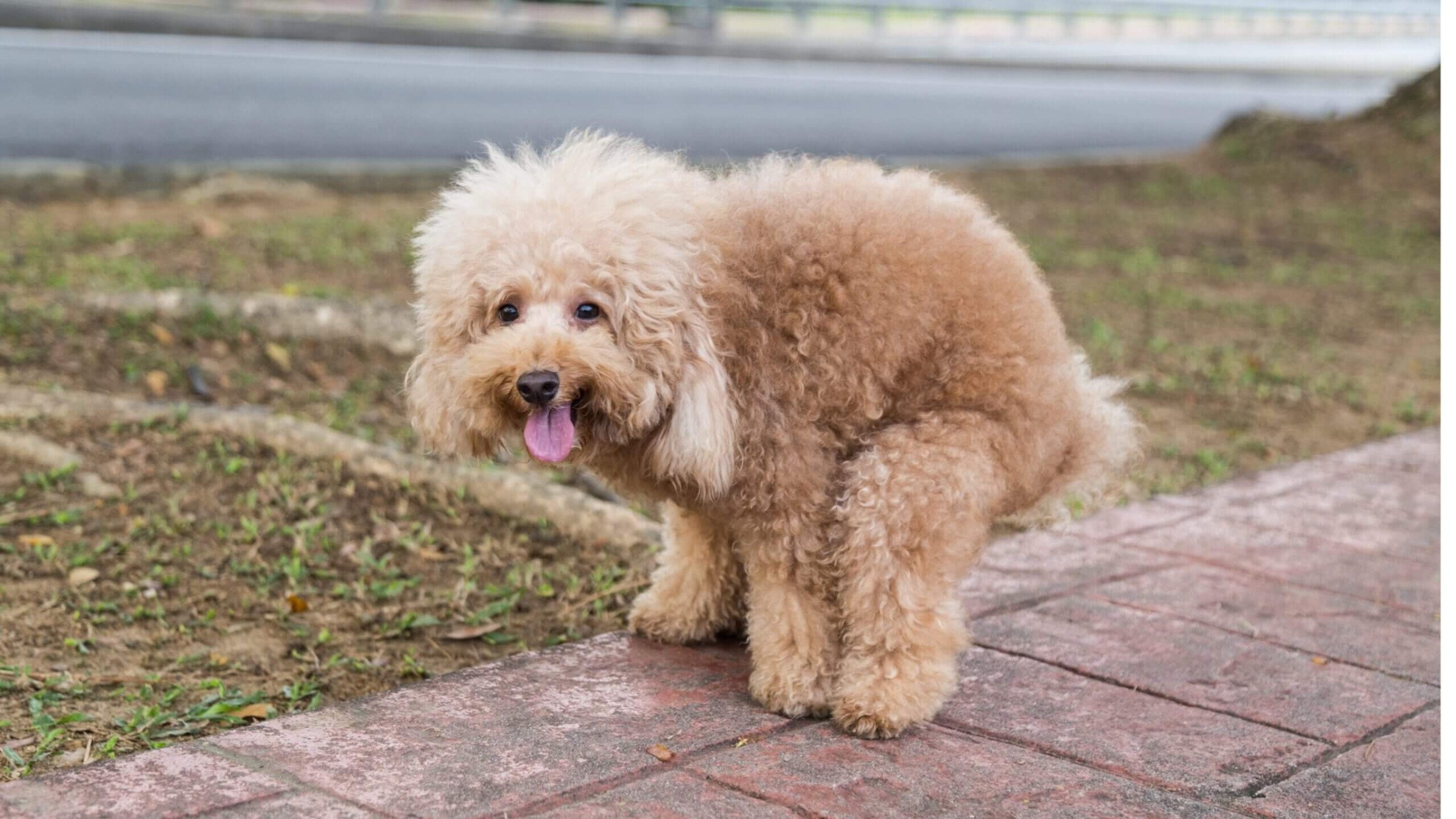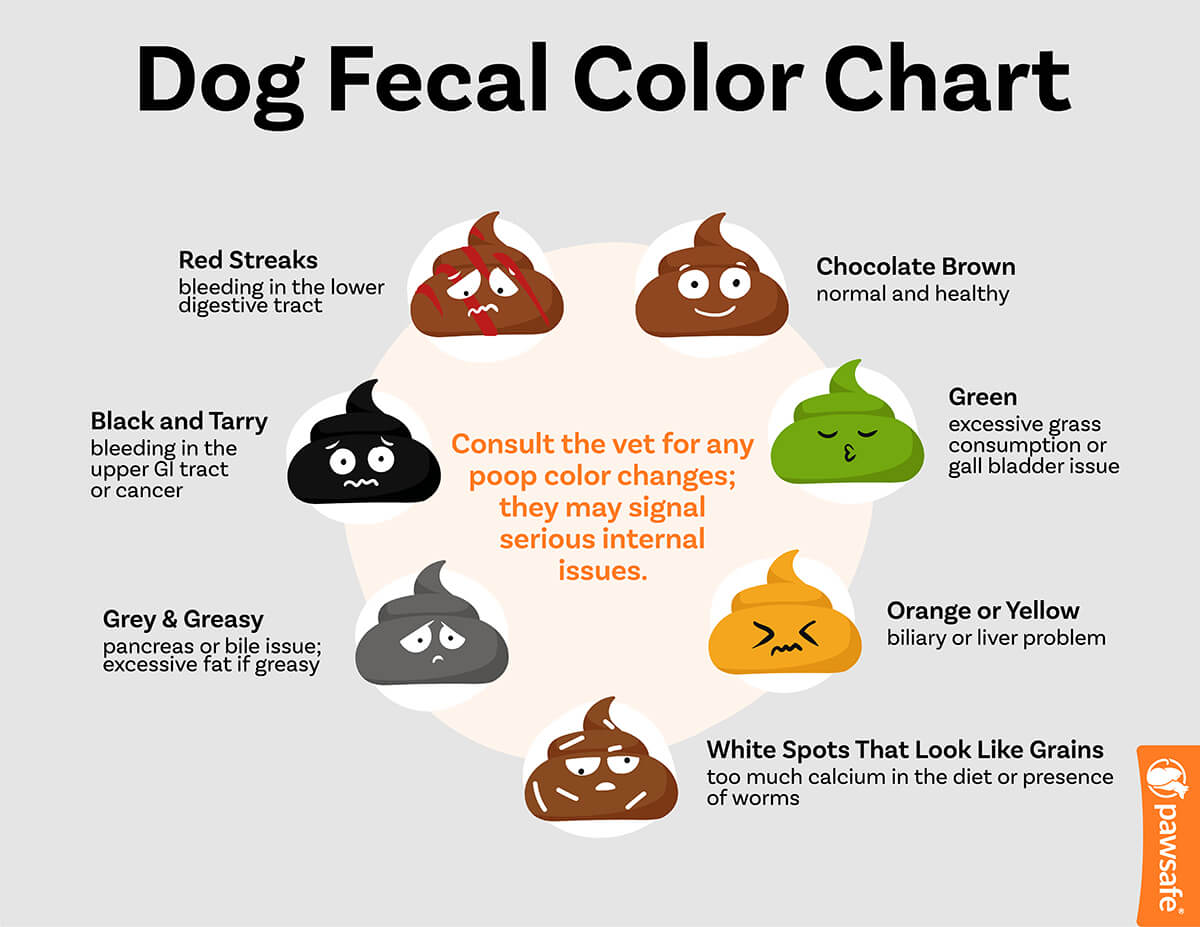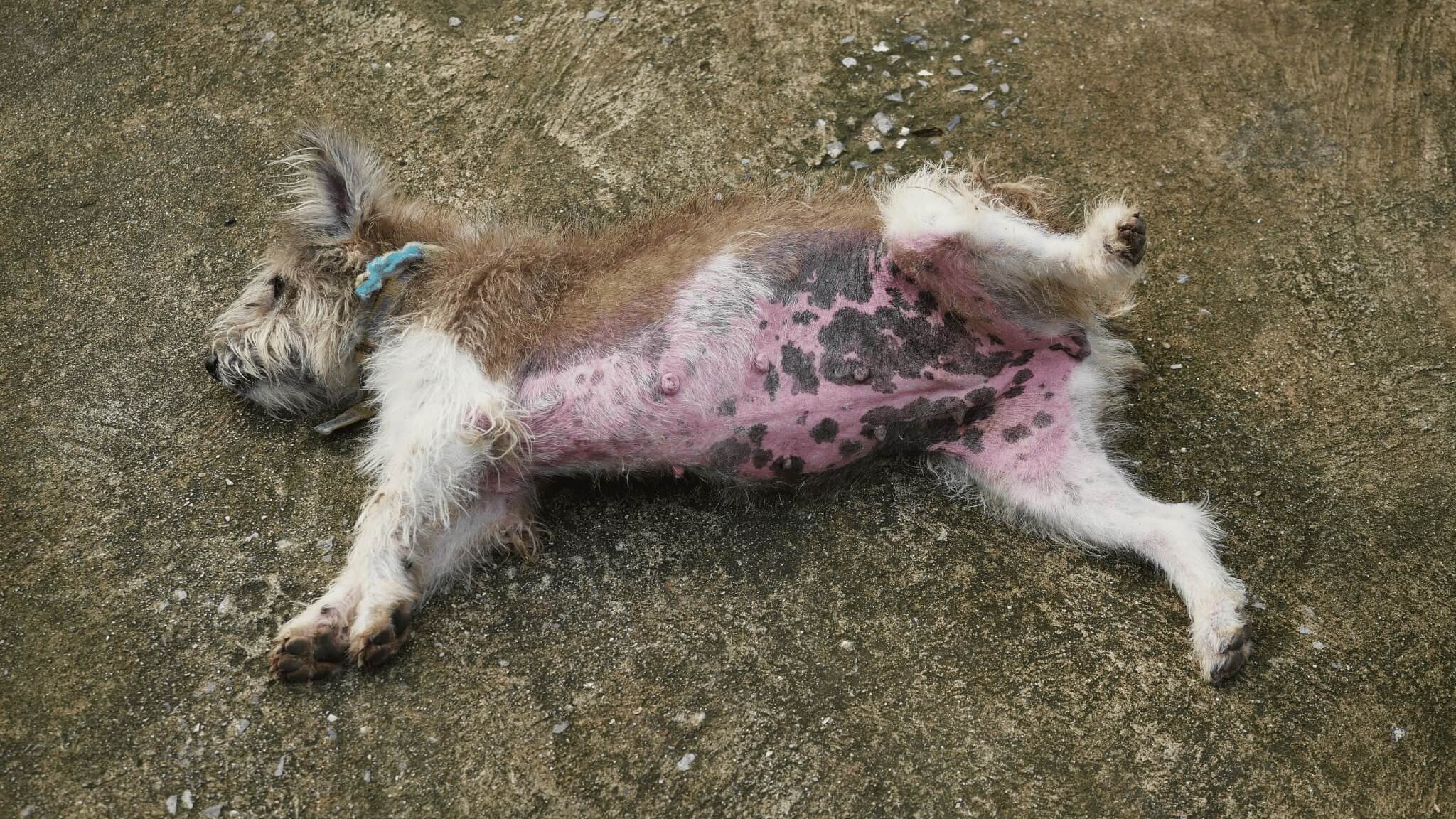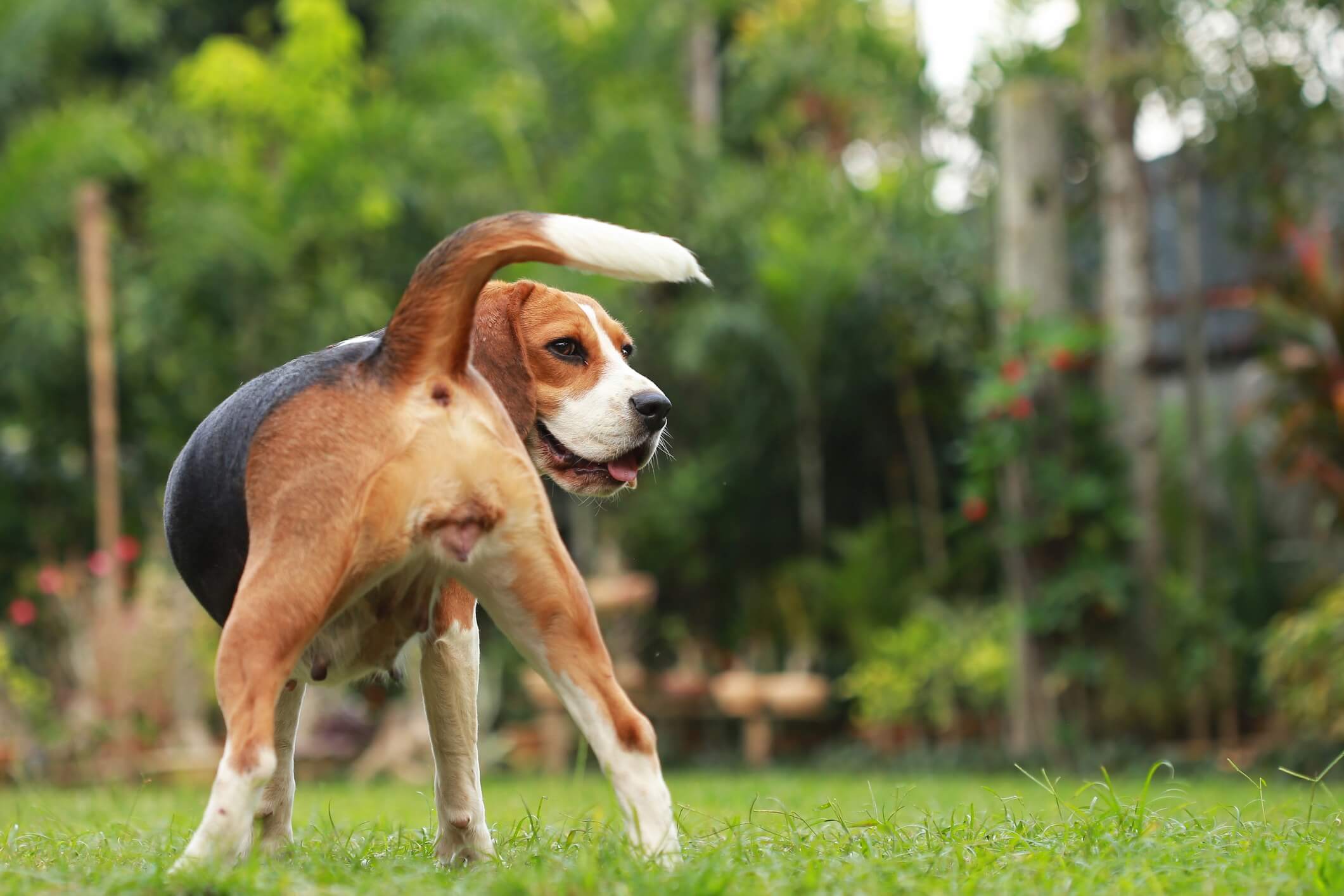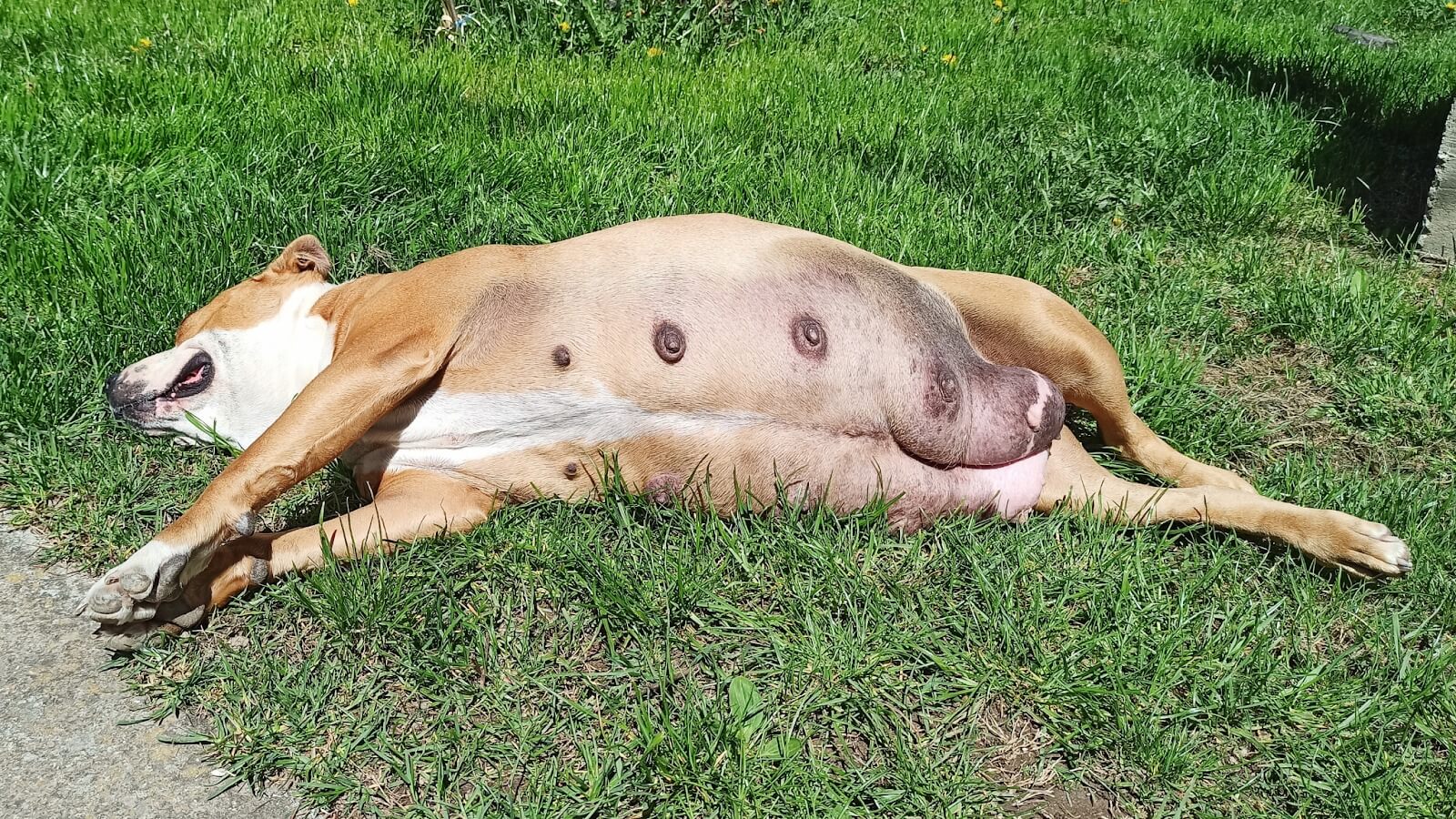If you’re wondering, “why is my dog’s poop yellow?” then you may be getting nervous. After all, a dog’s gut is 70% of their immunity, and the color of their poop is a good indicator of gut health or other health issues you may not even be aware of. Therefore, yellow dog poop is definitely a cause for concern.
Dogs are bound to eat stuff they shouldn’t, so stool color changes are inevitable. Still, some things are within your control to promote tummy health, like giving them enough fiber in their diets and probiotic doggy chews.
There are many causes of unusual dog poop colors, some more harmful than others. Because of this, it’s essential to know which is before taking the next step. We give you nine reasons for yellow dog poo, along with other odd colors you can encounter.
So, Why is My Dog’s Poop Yellow?
Most times, yellow poop in dogs indicates indigestion due to food intolerance. It can also mean issues like pancreas and liver problems, eating foreign objects, intestinal parasites, and gastroenteritis. Some cases go away on their own, while others are more severe, requiring medical attention.
Most people dread and avoid animal poop like the plague, but not dog owners. It’s so normal for pet parents to handle their dog’s poop and clean up after them on walks that it becomes a mundane part of their day. We often don’t think much of their dogs’ stool until they encounter worrying changes.
You can expect minor changes in your canine’s stool every so often in the course of their life without worrying too much. These changes often subside independently, and your pup returns to normal in no time.
However, abnormalities lasting for many bowel movements and more than 48 hours need further investigation. These abnormalities include pooping a clear liquid, diarrhea, and weird colors like white poop. But before getting into the yellow stool, what does normal dog poop actually look like?
Normal Stool Appearance in Dogs
Healthy poop should be various shades of brown, firm, and moist. There are three main things to consider when examining your dog’s poop.
Color
Healthy dog poop is usually brown. This is because bile pigments turn undigested food brown as it moves through the digestive tract. The intestines reabsorb the used bile, turning it green, and the green bile interacts with food again.
If there is a problem with the organs involved with bile, like the liver, bile ducts, or gallbladder, a dog’s pee may also turn green because bile pigment will make its way to a dog’s kidneys.
So, the complete color change of digested food is green, yellow, and finally brown (it’s poop at this point). This color scheme is important to know because it shows that yellow poop means incomplete digestion.
Consistency
Poop should be firm and moist to show healthy digestion and proper hydration. It should be log shaped. Other consistencies include:
- Loose and runny – diarrhea
- Greasy – Indigestion and Pancreatitis
- Foamy poop – a bacterial infection
- Hard pellets – dehydration or constipation
Coating
Anything lining the poop, like mucus or blood, refers to coating and may show intestinal inflammation. Normal poop has minimal, almost unseen mucus lining.
What Causes Yellow Poop in Dogs? 9 Reasons
1. Food Intolerance Causing Indigestion
Your pup is likely reacting to a particular food if you’ve noticed the color change after changing diets. Food intolerance resulting in indigestion is the biggest cause of canine yellow stools. This is often “mustard yellow” poop and it often has a lot of mucus coating it.
When food causes discomfort, the body tries to get rid of it immediately. You may also see gassyness, vomiting, and bloating.
The result is yellow, runny poop because the food hasn’t had enough time to interact with bile. Bile pigments turn digested food from yellow to brown, so yellow stool suggests this process is incomplete.
Food intolerance is an adverse reaction to food your dog can’t digest, like lactose in milk, spices, food additives like CMC or sulfites, or certain drugs. It is not the same as food allergy. A food allergy is when the dog’s immune system reacts to the food. This may cause vomiting diarrhea, but you may also see itchy paws, skin problems, and ear infections.
2. Pancreas Issues and Pancreatitis
The pancreas plays a huge role in digestion and directly affects poop color. Exocrine Pancreatic deficiency (EPI) is an example of a pancreatic disorder where the pancreas can’t produce enough enzymes. The result is malabsorption syndrome, where your dog has trouble digesting food, affecting stool color.
Pancreatitis is a painful condition where digestive enzymes leak into the pancreatic tissue. It causes steatorrhea, meaning the intestines don’t get enough enzymes to digest the fat in food, resulting in yellow, greasy poop. Dogs display nausea, lethargy, anorexia, and abdominal pain with this condition.
3. Eating Something Yellow Food Items Or Foreign Objects
Consuming heavily dyed objects can change a dog’s poop to yellow. These include yellow crayons, chalk, and even food dye. Most of these instances are minor and pass soon unless your dog experiences GI obstruction requiring medical assistance.
Eating too many carrots or other other yellow, orange, or red fruit and vegetables (including corn) may also turn a dog’s poop yellow because they contain carotenoids, such as beta-carotene, which can dye to the poop. Keep in mind, the body uses beta-carotene to create vitamin A. While dogs need vitamin A to survive, too much is toxic to dogs.
So if your dog’s poop is yellow because you feed them a lot of carrots or similar vegetables, it may be time to scale back. Vitamin A accumulates over times so the poisoning does not happen immediately.
4. Liver Problems (Jaundice)
The liver produces bile, which in turns poop brown. Yellow poop can mean the liver isn’t producing enough bile for the stool to change to brown. Liver issues can be fatal and need immediate veterinary care.
Many dogs with liver issues may develop jaundice causing the yellowing of the eyes and skin. Jaundice doesn’t directly cause yellow poop. However, you can check for eye discoloration to confirm liver issues that could cause the yellowing of stool. That is, check the whites of the eye and the dog’s gums for yellow coloring.
5. Gallbladder Problems (Cholecystitis)
Gallbladder issues like stones can limit bile from reaching your intestines, resulting in poop yellowing and jaundice. Other gallbladder issues that may result in yellow poop include cholangitis (inflammation in the gallbladder). The gallbladder stores and concentrates bile, making it crucial to your dog’s poop color.
6. Irritable Bowel Syndrome
Irritable Bowel Syndrome (IBS) is a persistent upset within your dog’s stomach and intestines. This causes refusing to eat, nausea, diarrhea or constipation, vomiting, and intense pain and discomfort.
Yellow poop is a common sign associated with IBS that can display as yellow mucus. While the exact cause remains largely unknown, inflammatory cells attack the intestinal walls. Research has shown that the condition is psychosomatic (signs aggravated by the mind), so stress in dogs can be a factor.
7. Intestinal Infections and Parasites
Parasites and microbes like bacteria can cause yellow poop in dogs when they infiltrate the intestinal walls. The damage to the intestinal walls affects how much bile is absorbed into the food, changing stool color.
Upon closer examination, you may notice white specks in your dog’s poop in case of a parasite infestation. Other symptoms include weight loss, inappetence, vomiting, and diarrhea. The color change will stop once an anti-parasite or antibiotic medication is administered.
8. Allergies
Some dogs are allergic to everyday ingredients in dog foods or treats. They may experience yellow diarrhea and other signs like sneezing, itchiness, rashes, redness, secondary skin and ear infections, and swelling.
9. Gastroenteritis
Gastroenteritis refers to any inflammation of the intestines and stomach, some cases being more severe than others. As mentioned above, parasites or viral infections can all cause GI inflammation resulting in yellow poop.
Should I Be Worried About My Dog’s Yellow Poop?
Many cases of poop yellowing go away on their own because they’re caused by food sensitivity. However, you can start showing more concern if the yellow poop persists and your dog displays other signs like vomiting, inappetence, and diarrhea.
Persistent excretion of yellow poop can result from severe health issues like liver and pancreas problems. These issues require immediate medical attention to avoid escalation into more severe stages.
What Causes Yellow, Dry and Crumbly Dog Poop?
Yellow poop that is dry and crumbly implies indigestion, and stomach upset due to food intolerance. The dryness in the poop shows that your dog is dehydrated or constipated, resulting in crumbly poop that’s released in small pieces.
Other conditions like Exocrine Pancreatic Insufficiency and IBS (Irritable Bowel Syndrome) alternate between dry and runny yellow poop.
Help! My Dog’s Poop Is Yellow and Runny
Yellow and runny poop is the most common sign of improper digestion due to intolerance of new food. It also shows an allergic reaction to an ingredient in dogs with food allergies if you see signs like sneezing and swelling.
Runny, yellow poop also shows problems with a dog’s liver, pancreas, or gallbladder. All these organs are responsible for crucial parts of the digestive process that influence the healthy brown color seen in dogs.
What Can I Do About My Dog Passing Yellow Poop?
1. Call the Vet & Collect a Stool Sample
2. Examine the Diet
3. Determine Food Allergies
4. Reduce Stress
5. Healthy Meal Plans
Frequently Asked Questions (FAQs)
Can Dog Food Turn My Dog’s Poop Yellow?
Can Chicken And Rice Turn A Dog’s Poop Yellow?
The yellow color is okay if it subsides after a day or two, but keep an eye on it and go to your vet if the issue gets worse (vomiting, signs of pain, or refusal to eat) or does not resolve after a day or two.
Final Thoughts
Yellow poop in dogs is quite common and results mainly from digestion problems. Food intolerance and allergies cause an upset stomach, leading to yellow stools. Other more severe conditions like liver, gallbladder, and pancreas problems can also generate color change.


